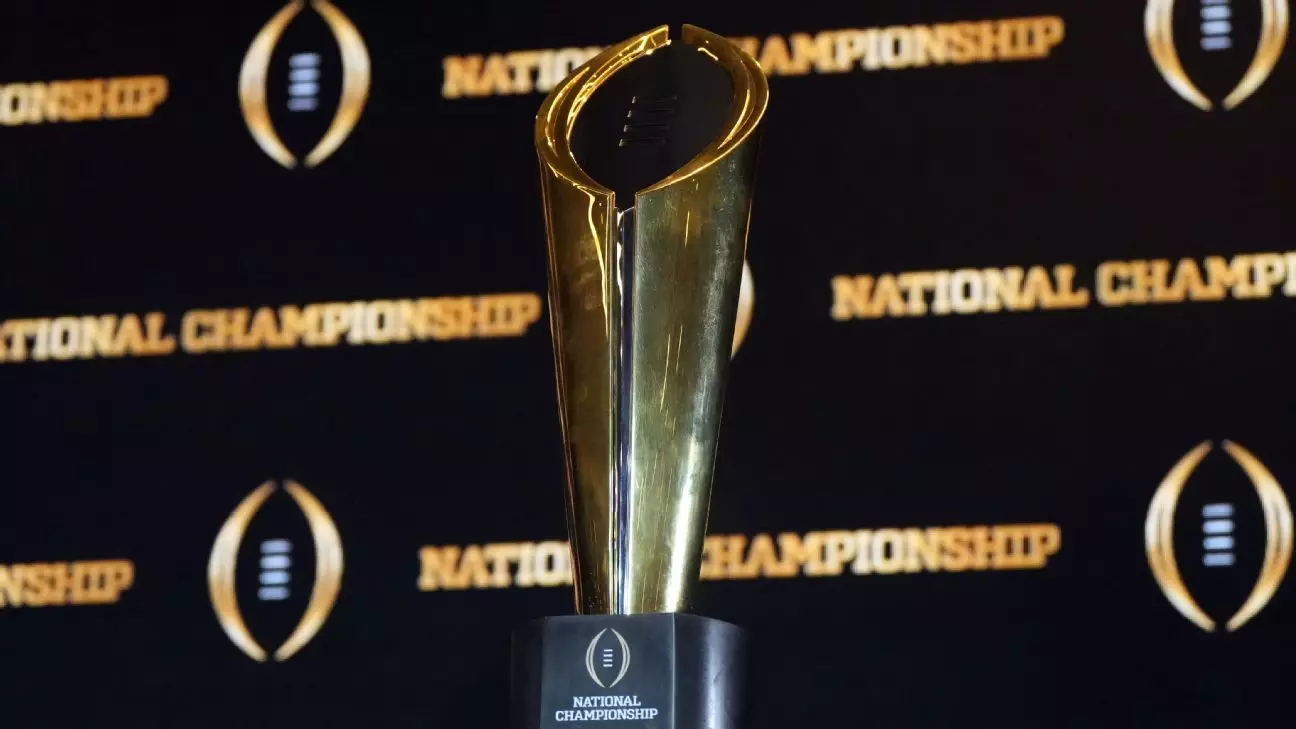The College Football Playoff (CFP) is a highly anticipated event in the sports calendar. Its intricacies, however, extend beyond the thrilling on-field matchups that captivate fans nationwide. One recent incident illustrates this complexity, as SEC commissioner Greg Sankey voiced concerns regarding the scheduling of the Goodyear Cotton Bowl Classic and the Capital One Orange Bowl. Sankey’s request for changes was ultimately denied, thrusting the challenges of playoff logistics into the spotlight.
Sankey’s appeal to alter the dates and times of crucial playoff games stemmed from a significant concern: fairness to the participating teams. Following Notre Dame’s victory over Georgia in the Allstate Sugar Bowl, which paved the way for their matchup against Penn State in the Orange Bowl, Sankey noted that Notre Dame would experience a shorter turnaround compared to Penn State. This creates an uneven playing field at a pivotal moment in the season. Sankey’s comments on “The Paul Finebaum Show” revealed his genuine worries about how this scheduling could impact the outcome of the game, effectively raising questions about competitive integrity.
It is important to recognize that while these concerns are valid, changing the schedule of two established games is no simple task. The intricacies of venue availability, logistics, and fan arrangements complicate the request for a shift in timing, illustrating how interwoven scheduling details are within the broader framework of college football.
The backdrop to Sankey’s request was a devastating pickup truck incident in New Orleans, which tragically resulted in multiple fatalities and injuries. In light of this event, security and safety for teams, fans, and officials became paramount. The decision to adjust the Allstate Sugar Bowl kickoff time by 18 hours was made to accommodate these concerns, showcasing the responsive nature of the CFP to unforeseen circumstances.
This tragic incident cast a long shadow over the playoff, prompting a shift in focus from the excitement of competition to the safety of all involved. Sankey’s comments underscore the nuances inherent in managing a sports event of this magnitude—balancing the thrill of competition with the necessity of ensuring safety in a time of crisis.
CFP Executive Director Rich Clark’s refusal to flip the game schedules emphasized the logistical challenges that such a shift would entail. He pointed out that altering the timelines could disrupt arrangements not only for the teams but for fans as well. Tickets and travel plans are often made well in advance, and sudden changes could lead to chaotic repercussions for those hoping to attend the games.
In addition to fan inconvenience, the operational aspects of the teams also demand consideration. Both Texas, who faced a resilient Arizona State team in the double-overtime thriller, and Ohio State, coming off a decisive victory over Oregon, had their own preparations set in stone. Logistical coherence is essential in ensuring that all parties—from universities to sponsorships—are able to function smoothly.
Sankey’s assertion that the matter at hand was not limited to SEC interests but rather enveloped all teams serves as a critical reminder of the interconnected nature of college football. Decisions made in moments of distress have lasting effects on the perception of fairness and equity in the postseason. The fundamental question remains: how does one ensure a level playing field amid the chaos surrounding events and circumstances beyond anyone’s control?
The answer may lie in structuring clearer protocols for such unforeseen events. Establishing contingency plans in advance could mitigate the friction that arises when tragedy strikes and gameplay is interrupted, ensuring that teams are treated equitably regardless of the timing of games.
In the realm of college football, moments of triumph are often accompanied by challenges that test the very fabric of the sport. The scheduling debacle surrounding the CFP underscores the necessity for strategic adaptability in navigating the complexities of postseason play. As fans eagerly anticipate the upcoming matchups, it becomes increasingly clear that the decisions made in the boardroom spill onto the field, impacting the integrity of the game, the safety of participants, and the experiences of fans. With a steadfast commitment to safety and fairness, it is vital that the college football community embraces flexible solutions in the face of unpredictability, ensuring the sport continues to thrive amidst the complexities of change.


Leave a Reply